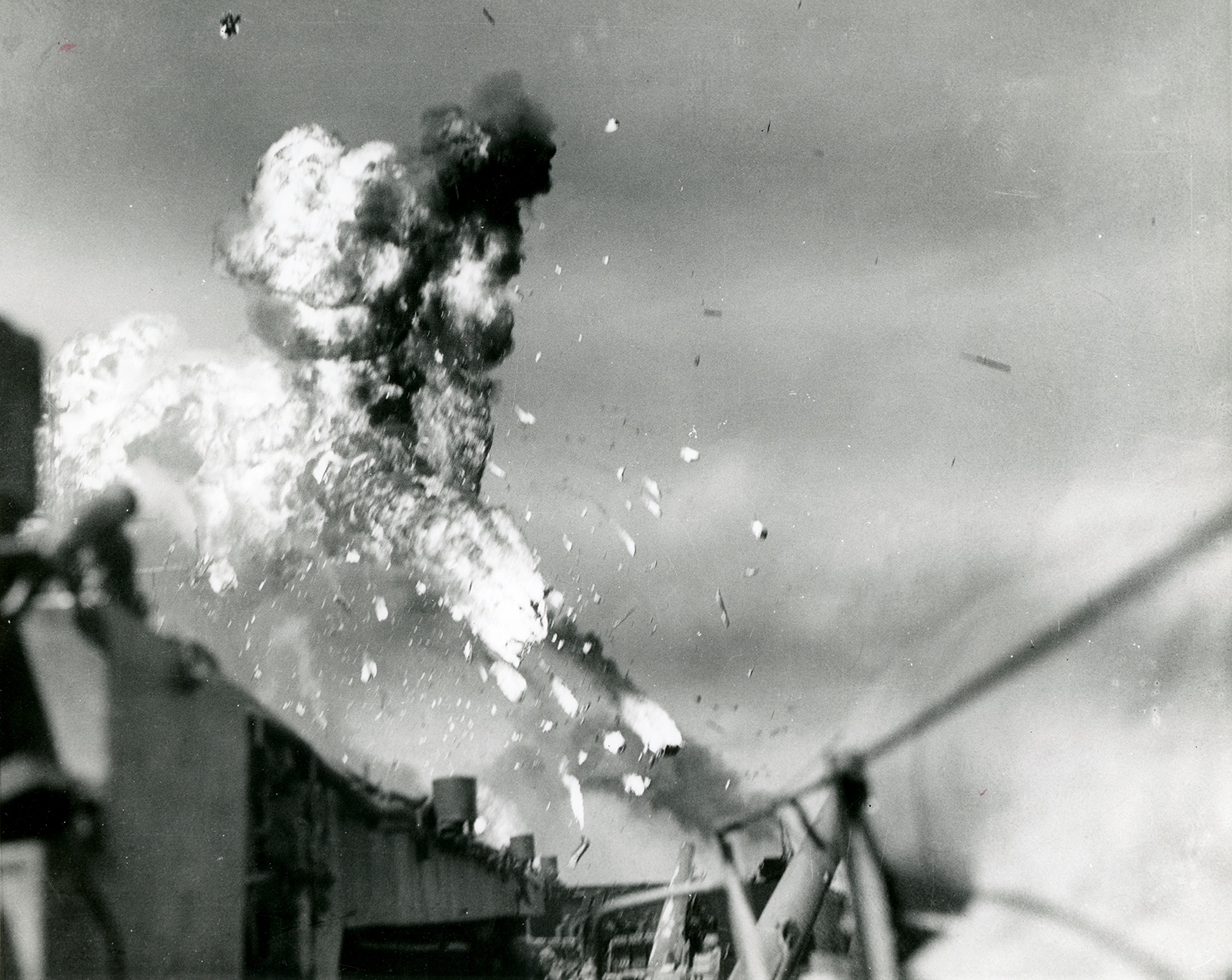Kamikaze Attacks of World War Two

On June 20th, 1944, after losing over 400 carrier-based fighters during the two-day Battle of the Philippine Sea, not to mention losing its geographic defense line between Japan’s oilfields in Southeast Asia and the Japanese Empire, Captain Motoharu Okamura proposed kamikaze suicide tactics to his superior officers.
What is a Kamikaze Attack?
Known as body attacks or ‘tai-atari’ in Japanese, kamikaze planes were modified fighters loaded with high explosives intended to maximize damage on enemy naval vessels, with a particular emphasis on sinking Allied aircraft carriers.
While the Japanese war machine suffered from diminished industrial capacity as well as inferior fighter planes compared to the American-built Grumman F6F Hellcat and the Vought F4U Corsair, Japan’s samurai Bushido code of death before defeat made kamikaze attacks a favored go-to tactic in the months leading up to Japan’s surrender.
Meaning ‘divine wind’ or ‘spirit wind,’ Japan’s kamikaze program accelerated after the October 25th sinking of the American aircraft carrier St. Lo, quickly expanding to over 2,000 flying bombs by the end of the year.
Allied Air Supremacy to Defend Against Kamikazes
An Allied naval defensive tactic known as ‘big blue blanket’ was quickly ushered into place, which established Allied air supremacy well away from the main carrier task force.
Utilizing a line of picket destroyers and destroyer escorts sailing at least 50 miles out from the main carrier force, the Allies were able to provide early radar interception of inbound kamikaze fighters, which allowed for improved coordination between fighter direction officers onboard Allied aircraft carriers.
Despite these defensive measures, however, 19% of all kamikaze attacks resulted in successful strikes on Allied warships, resulting in the deaths of over 7,000 Allied naval personnel.
Of the Japanese airmen, 3,912 kamikaze pilots sacrificed their lives in what would prove to be a last-ditch Hail Mary before Japan’s eventual surrender after the Allie’s dropped nuclear bombs on Hiroshima and Nagasaki.
